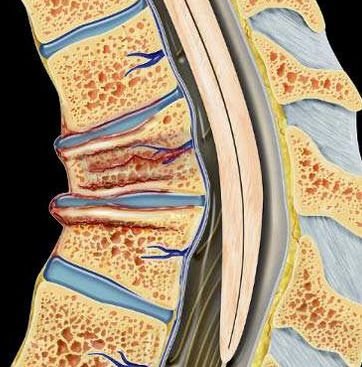Locked facets
Locked facets
Locked facets refer to a severe spinal injury where the articular processes (facet joints) of one vertebra become dislocated over the facet of another, leading to fixed malalignment of the spine. This can occur on one side (unilateral) or both sides (bilateral) and most commonly affects the cervical spine (neck region). Locked facets result in spinal instability, deformity, and often spinal cord compression, making it a true neurosurgical emergency. In the context of Bangladesh, locked facets are frequently seen following road traffic accidents, falls from height, and industrial trauma. Lack of early diagnosis and appropriate spine stabilization can lead to irreversible neurological injury or paralysis. Types of Locked Facets Unilateral Locked Facet One side of the vertebra is dislocated Often presents with rotational deformity and partial instability Neurological damage may be mild or absent Bilateral Locked Facet Both facet joints are dislocated Leads to complete anterior displacement of the upper vertebra Frequently associated with severe spinal cord injury or quadriplegia Increasing Burden in Bangladesh Locked facet injuries are on the rise in urban and rural Bangladesh due to: Growing number of motorbike crashes without helmets Unprotected rooftop falls in rural homes Rickshaw and bus accidents involving sudden deceleration Manual labor injuries in construction or agriculture Improper lifting or sudden neck trauma in sports and play (especially in children) These injuries are often missed in peripheral health centers due to limited access to spine imaging and lack of trained neurosurgeons. This is why early referral to a specialist like Dr. Md. Nafaur Rahman is essential. Symptoms of Locked Facet Injury Severe neck pain and deformity Limited or no neck movement Loss of sensation or motor strength in limbs Abnormal neck posture or torticollis (in unilateral cases) Paralysis (especially in bilateral locked facets) In children: refusal to move, irritability, neck stiffness Diagnostic Tools Dr. Md. Nafaur Rahman uses a comprehensive diagnostic protocol, adapted for Bangladeshi healthcare infrastructure: Lateral cervical spine X-ray – May show “jumped” or “perched” facets CT Scan (Axial and 3D Reconstruction) – Definitive diagnosis of facet dislocation MRI of cervical spine – To evaluate disc herniation, ligamentous injury, and cord compression Neurological examination (ASIA scale) – Essential for treatment planning Early diagnosis using high-resolution imaging is the key to preventing permanent disability. Management of Locked Facets Locked facets require urgent reduction and spinal fixation. Delay in treatment may result in permanent spinal deformity or cord injury. ✅ Non-Surgical Management (Rarely Applicable) Attempted only in selected unilateral locked facet cases without cord compression Closed reduction using skull traction (Gardner-Wells tongs or Halo) Requires real-time neuromonitoring and MRI prior to reduction Followed by immobilization with cervical brace ✅ Surgical Management (Gold Standard) Surgical treatment is mandatory in: Bilateral locked facet injuries Failed closed reduction Disc herniation or spinal cord compression Instability with neurological deficits Surgical Options Offered by Dr. Nafaur Rahman: Anterior Cervical Discectomy and Fusion (ACDF) Posterior Cervical Fusion with lateral mass screws Combined 360° approach (anterior + posterior fusion) for high instability Intraoperative neuromonitoring to minimize risk to spinal cord Use of biocompatible cages and titanium plates for long-term stabilization Pediatric Considerations In children, facet dislocations require special attention due to immature bones, ligamentous laxity, and growth plates. Dr. Nafaur uses growth-sparing fusion techniques, custom implants, and minimal access surgery to reduce trauma and ensure future spinal development. Prognosis & Recovery Prognosis depends on time to treatment, degree of cord injury, and age of patient Early reduction and fusion lead to full recovery in unilateral cases Bilateral dislocations with cord injury have guarded outcomes but rehabilitation can improve function Post-surgery collar/bracing is used for 6–12 weeks Rehabilitation support is essential for regaining mobility Why Patients in Bangladesh Choose Dr. Md. Nafaur Rahman ✅ Extensive experience in cervical spine trauma including locked facets ✅ Operates in state-of-the-art operating theaters at NINS and private centers ✅ Provides both pediatric and adult spinal trauma care ✅ Uses international-grade implants and techniques ✅ High success rate with complex and neglected spine injuries ✅ Known for accurate diagnosis and personalized spine recovery plans For Urgent Consultation or Spine Surgery 📌 Dr. Md. Nafaur Rahman Assistant Professor, Pediatric Neurosurgery, National Institute of Neurosciences & Hospital (NINS) Chief Consultant, Bangladesh Paediatric Neurocare Centre 📞 For Appointment: 📱 +8801912988182 | +8801607033535 🌐 Visit: www.neurosurgeonnafaur.com










